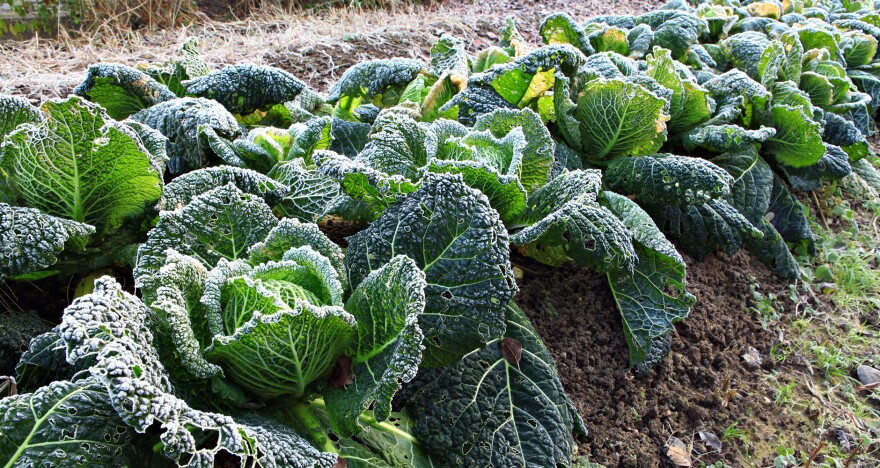New gardeners who sprouted green thumbs during the pandemic will soon face their first Kenai frost.
Night-time temperatures could dip into the high 20s this week in the Kenai-Soldotna area. For the scores of newbies who just started gardening during the pandemic, this might mean learning to clean up outdoor beds, bring plants inside and prep early for next spring.
Aspiring gardeners everywhere used this stay-at-home summer to get planting for the first time, with Alaskans especially reaping the benefits of the long summer days. Renae Wall, secretary of the Central Peninsula Garden Club, said there’s been increased activity in the club’s Facebook group, where local gardeners commiserate about the approaching cold and share advice about transitioning to fall.
“Really, the preparation is just dealing with all your harvest,” Wall said. “That’s the fun thing about talking to other gardeners, is finding out how they put away their harvests. You can do it in a root cellar, you can blanch and freeze, you can dry, you can pickle, there’s lots of different creative ways people do it and add their own variety.”
The garden club doesn’t meet over the summer and it had to stop meeting prematurely this spring because of COVID-19. But now it’s back to a monthly schedule. The next meeting, Oct. 13, will center around gardening in the winter.
Another evergreen resource is the Cooperative Extension Service. Its website features a trove of publications, including a checklist for gardeners heading into fall and winter and a guide to building a root cellar.
Casey Matney is an extension agent with the Cooperative Extension Service based in Soldotna. He recommends cleaning up and composting growth that has accumulated over the summer. Matney also recommends rodent control.
“As we start to have our temperatures cool down, this is also the time when a lot of our rodent numbers have been peaking,” he said. “And they’re also looking for shelter and for more forage. So you might start to see some rodent damage in some of the gardens. They especially are going for things like parsnips and turnips, and especially our carrots.”
Slugs, too, might try to make a home of your garden this winter, said Wall.
“I think I would advise, obviously, just cleaning up your garden,” she said. “Slugs love to hide and lay their eggs under that old, dead material.”
Among nearly 40 other hints, the Cooperative Extension Service fall and winter checklist also recommends saving wood ash and applying mulch around certain perennials to prevent roots from freezing.
Another strategy: Plan ahead. Garden club board member Larry Opperman said he sends soil samples to a lab in the winter so that by the spring, he has a sense of his soil quality.
“The reason why I’m doing it now is because sometimes it takes a while for those results to get back from the lab,” Opperman said. “So this time of year is actually a very good time to soil sample, because you’ve got all winter to get your results back, then you’re ready to amend your soil first thing in the spring and you can get planted faster.”
The Cooperative Extension Service has a guide to soil sampling on its website.
Opperman also recommended planting a cover crop — a high-nitrogen plant you don’t necessarily plan on harvesting but that will put a little nitrogen back into your soil for next year.
And then there’s hydroponics. Though they sound complicated by name, hydroponic gardens can be built at home. Melissa Sikes, a natural resource education specialist for the Fairbanks Soil and Water Conservation District, has helped compile an indoor gardening curriculum for educators, as well as step-by-step guides for different kinds of hydroponic gardens.
Just make sure you’ve got a good water source, that you don’t overfertilize and that you have the right light. Which is not to say you need to splurge at the garden store.
“That’s the beauty of right now, is that there are so many super-inexpensive LED shop lights that are available and work just fine,” Sikes said. “You don’t have to go spend $400 on a super expensive plant light.”
Sikes recommends keeping a light source two to three inches above seedlings and using a string or DIY pulley to ensure that it can be moved as your plants grow. For warmth, try heating your water source with a fish tank heater.
For more ideas about fortifying your garden for the freeze, you can visit cespubs.uaf.edu or join the Central Peninsula Garden Club’s Facebook page. For detailed instructions on building a hydroponic garden, visit fairbankssoilwater.org.






